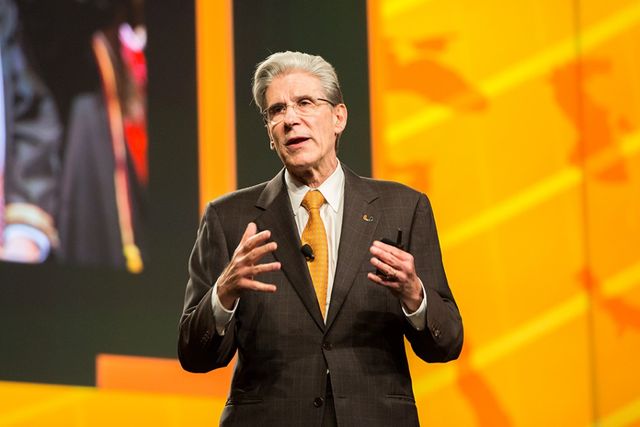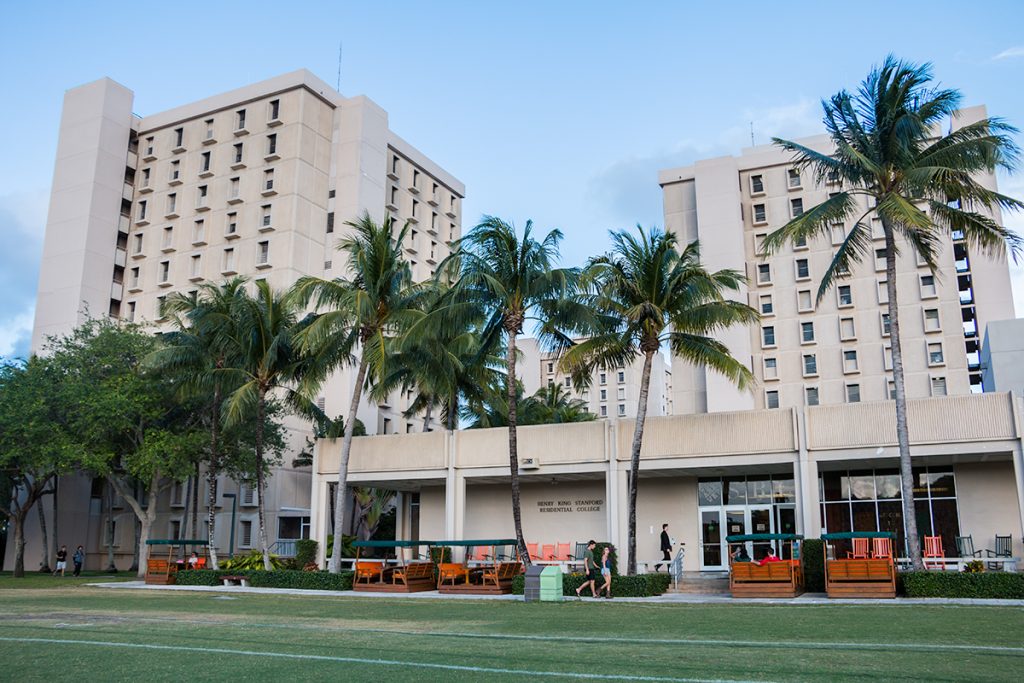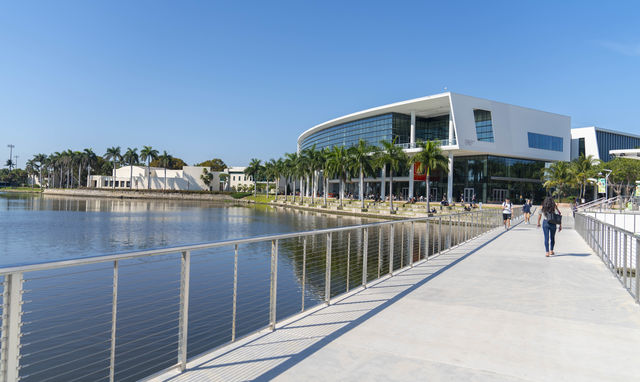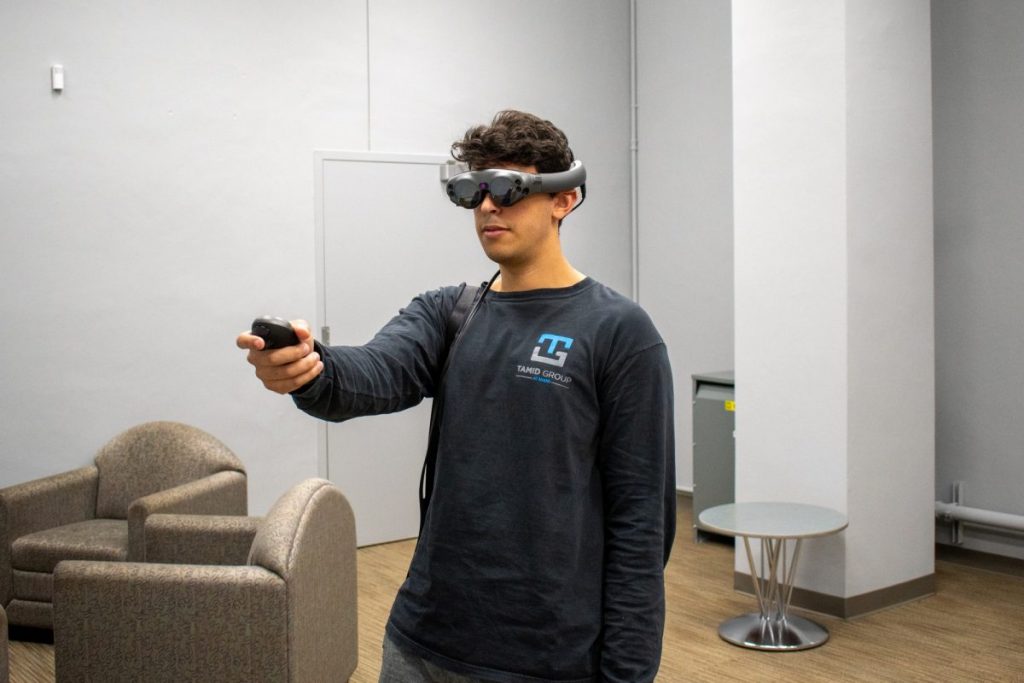
University of Miami President Julio Frenk is confident that in-person instruction will resume come August. However, during a Zoom roundtable discussion with student media leaders on April 30, Frenk said the campus environment students return to will be very different.
The university’s plan for a return in the fall will include mass-testing of students and employees for COVID-19, contact tracing and a reimagination of on-campus lifestyle and instruction, Frenk said.
Throughout the course of this pandemic, Frenk has been leading UM decisions not just as the president of the university, but also as a world-renowned global health expert. During his long career in public health, Frenk has worked as a physician, Mexico’s secretary of health, an executive director at the World Health Organization, a senior fellow of public health at the Bill and Melinda Gates Foundation and most recently served as the dean of the Harvard T.H. Chan School of Public Health.

Following the announced retirement of former UHealth CEO Edward Abraham at the beginning of April, Frenk also assumed that position.
He will now spend the next few months guiding UM and its health systems as preparations are made for a safe return in the fall.
Here are key elements of the president’s strategy to re-open the campus:
- Frenk’s four-pillar plan to bring students back in the fall
- Containment strategy: How regular testing and contact tracing could limit the spread on campus
- Postponement of Stanford Residential College demolition: How it will now be used to prevent community spread of COVID-19
- University to implement mixed use of online and in-person instruction
- 6 feet apart: How housing, student organizations and sporting events will be impacted
- Study abroad programs questioned
- Flu shots promoted
- Life after coronavirus
Frenk’s four-pillar plan to bring students back in the fall
UM is expecting to start classes in the fall as normal, on time and in person. However, Frenk emphasized this is only if the university can ensure a safe return.
“We need to be 100 percent sure that we can do that safely,” Frenk said. “We would never put anyone at risk, not any student or any faculty member or any staff member. But I think it is a realistic expectation to think that we will start on time in August.”
To make this happen, the university has created a four-part plan including provisions for testing, tracing, separating and vaccinating, which Frenk alongside a taskforce of other administrators are working to implement during the school year.
The first part of this plan is to be able to test everyone, Frenk said. With a community of 35,000 individuals, including 17,000 students and 18,000 employees, Frenk said it is a realistic endeavor for the university given the current capacities for testing at UHealth.
Second, is having students and employees opt in to a contact-tracing program utilizing applications currently under development.
Separating UM community members, the third pillar, will involve social distancing practices on campus that will impact classroom sizes, housing and the way in which shared spaces like the Shalala Student Center or dining halls are utilized.
As the world battles coronavirus alongside the flu for the first time this fall, Frenk said the university is recommending that for the fourth part of its return plan, all students, faculty members and employees will be encouraged to get their flu shots.
Frenk said that with these four steps, he is confident that life at the university can resume.
While scientists around the world race to develop a vaccine for COVID-19, Frenk said the university needs to be able to function as the pandemic continues.
“We just need to coexist with the virus and adapt,” Frenk said, adding that this plan will help buy time until a vaccine is available.
The main risk to re-opening this fall is the impact that a premature loosening of stay-at-home orders this summer could have on the current curve of coronavirus cases. Frenk said the university is carefully analyzing what is happening in Georgia but said it would take some drastic developments for the university’s current plan to change.
“At this point, it would take something really very dramatic, which I do not envision, for us not to open in the fall,” he said. Students and staff can expect a decision to be released on the status of UM’s fall semester in June, Frenk said.
Containment strategy: How regular testing and contact tracing could limit the spread on campus
As the curve begins to flatten, President Frenk said Florida should be able to follow a more traditional public health containment approach where orders to stay at home may no longer be necessary. This means having high capacity for testing everyone regularly and then tracing contacts of each positive case.
Frenk explained that because of the slow start the nation had on testing at the beginning of this year, community transmission was widespread, meaning containing and tracking cases wasn’t previously possible.
But come fall, he believes regular coronavirus testing will be realistic for the university. As part of the first two pillars of the university’s plan to resume classes in person, Frenk said UM will implement widespread testing and contact tracing. During the past few months, UHealth has been working to build up its stockpile of tests to carry out Phase 1 of its plan –testing the 35,000 members of the UM community– and has reached in-house capability to administer and process these tests for same-day results.
“We’ll have the capacity to test everyone when we’re all back,” Frenk said.
These tests wouldn’t be given just once, Frenk said, but ideally on a weekly basis. He explained that the goal for the whole nation is to be able to test every American each month. However, as this would require more than 330 million tests, he said it is unlikely this goal can be achieved despite technological innovations being made with tests for COVID-19.
Beyond testing students and staff, Frenk said the university also has a plan to implement contact tracing by having UM community members opt in to contact tracing applications on their phones.
“With those apps we should be able to quite rapidly trace contacts,” Frenk said, adding that students and employees found to have come in contact with someone who had tested positive for COVID-19 would then be isolated and would continue their coursework online until their 14-day quarantine period is over.
While Frenk touted the benefits of these applications, he also emphasized that this would be a voluntary initiative.
“We’re going to have to give all students and staff and faculty all the assurances that there will be no violation of privacy,” Frenk said.
Postponement of Stanford Residential College demolition: How it will now be used to prevent community spread of COVID-19

The university’s plan to contain the virus on campus will involve not just widespread testing and tracing, but also properly isolating those who test positive and their contacts. Stanford Residential College, which UM had originally planned to demolish this summer, will remain open to provide the university more than 800 extra beds to be able to house a higher number incoming freshmen and returning students and also to isolate students, if necessary.
Frenk said UM is also fortunate in that it is currently adding the finishing touches on Lakeside Village, a seven-story, $153 million housing construction project that is set to open in August to its first residents. With this, the university is gaining more than 1,000 additional beds to house students.
In addition, Frenk said the university is also making deals with hotels as sites to house students for possible isolation in the fall.
“We’ll have enough space in case anyone tests positive, you can quickly isolate that person,” he said.
University to implement mixed use of online and in-person instruction
The third part of UM’s return plan, separation, will affect the way classes are run in the fall, Frenk said. Small classes will resume in person, but larger lecture classes, such as introductory biology, chemistry and others will be carried out online.
“You won’t see large lecture halls filled with students. That would not be safe,” Frenk said.
A task force, including Provost Jeffrey Duerk and Vice President for Student Affairs Patricia Whitely, is working to preserve the academic experience while safely separating students. This means finding extra spaces on campus to carry out classes and spacing students 6 feet apart in lectures, while also preparing quality online instruction to fill in the gaps for larger courses that may not be possible for an in-person format.
UM students have shared misgivings about the value of online classes, but Frenk assured that any online format in the fall would be a much higher quality than the emergency online instruction given this semester.
“What we’re now working on is taking full advantage of all the capacities of high-quality online instruction,” Frenk said, which could include creating a better multimedia experience for students, far different from the Powerpoint slides or online lectures they received this spring. “If you do that, that is actually more effective than sitting in a huge lecture hall listening, where you can barely ask questions.”
6 feet apart: How housing, student organizations and sporting events will be impacted
The task force is also tackling ways to adapt the student experience on campus so that students can resume activities, but in a safe way with less density in shared spaces.
“Things are not going to be the way they were when you left campus,” Frenk said. “We are totally redesigning everything.”
Architects are currently at work to reconfigure the interiors of residential colleges, dining halls and other shared spaces like the Shalala Student Center to minimize a lot of student contact and keep the recommended 6 feet of distance. In addition, at places like Shalala, masks may also be required for a time. With summer A, B and C online, the university will be using this time to implement changes on campus.

Student organizations will also be affected, as large in-person gatherings may no longer be feasible. This will require students and staff to continue to use applications such as Zoom for the time being, Frenk said.
Other large gatherings, such as sporting events, may proceed but with empty stadiums. UM’s football season is set to start on Sept. 5 against the Temple Owls on home turf at Hard Rock Stadium. However, the reality of this is still up in the air.
“I do think we’ll be able to save the season,” Frenk said, but students and fans might have to cheer from afar with ESPN’s ACC channel rather than in the stands.
Seeking creative ways to preserve the college experience, UM is working with its partner Magic Leap, a spatial computing company, to create new mixed reality environments.

“This is an opportunity for innovation like we haven’t had in innovation in a long time,” Frenk said. Despite these changes, Frenk assured that the college experience will be preserved.
“I think the essence of the college experience will be there, and I think with technology we’ll be able to figure out ways to continue to interact in a very vibrant way,” Frenk said.
Study abroad programs questioned
While no official decisions have yet been made about study-abroad programs for the upcoming year, Frenk said it is likely that they will not continue as planned.
“I would have to be persuaded with a lot of very powerful arguments to actually convince me that study abroad this particular term is a good idea,” Frenk said. In this case, he emphasized that the university has to be conservative in terms of possible risks.
Students who were called back from their programs in Italy at the end of February were not happy, Frenk said, but they were glad later when cases in Italy soon skyrocketed. While the university was able to quickly bring back study-abroad students this spring, Frenk says he has to worry about the possibility of launching more study-abroad programs and then possibly not being able to ensure students’ safe return.
“I prefer to have people angry because we overshoot than because we underestimated the risk and someone really got sick,” Frenk said. “It’s easier to deal with the first type of anger than the second.”
Instead of study abroad, Frenk said it is better to focus on things that can be controlled.
“In an emergency, these are the life lessons you learn: You need to focus on the things you can control. If you are agonizing or taking risks over things you can’t control, you can get yourself in a very bad spot,” Frenk said. “What we can control is what happens on our campus.”
In lieu of study abroad, the university is seeking a virtual alternative.
Flu shots promoted
The university always encourages students and staff to get their flu shots, but this fall it will be especially critical that they do so, Frenk said.
In past flu seasons, UM has offered free flu shots through Student Health Services, but this year Frenk said the university is going to insist that everyone gets vaccinated.
“This will be the first flu season where you still have coronavirus circulating,” Frenk said. “We need to make sure that people don’t get sick of the flu, so that if anyone catches the coronavirus, we have the ability to treat them.”
Life after coronavirus
For other generations it was a world war, Vietnam or 9/11, but for young people today, the COVID-19 pandemic will be a defining moment of their lifetime, Frenk said.
“This pandemic is going to be one of the big events of your generation because the world is not going to be the same. It’s never going to be the same,” Frenk said. “This is one of those events that change the course of history.”
After World War II, Frenk said he and those who came before him were tasked with shaping what the world would look like. Now, he said it’s up to the young people to decide what life will be like after coronavirus.
Frenk addressed students stating, “It’s your generation and exactly your generation, the one that’s going to shape that new world, and I urge you to think, what do you want the world to look like afterwards?” This will start with how Canes shape the university upon their return, Frenk said.
“The future is not going to be defined by the virus; it’s going to be defined by how we react to the virus,” Frenk said. “You are the voice that is going to matter as we navigate our way out of the pandemic.”





